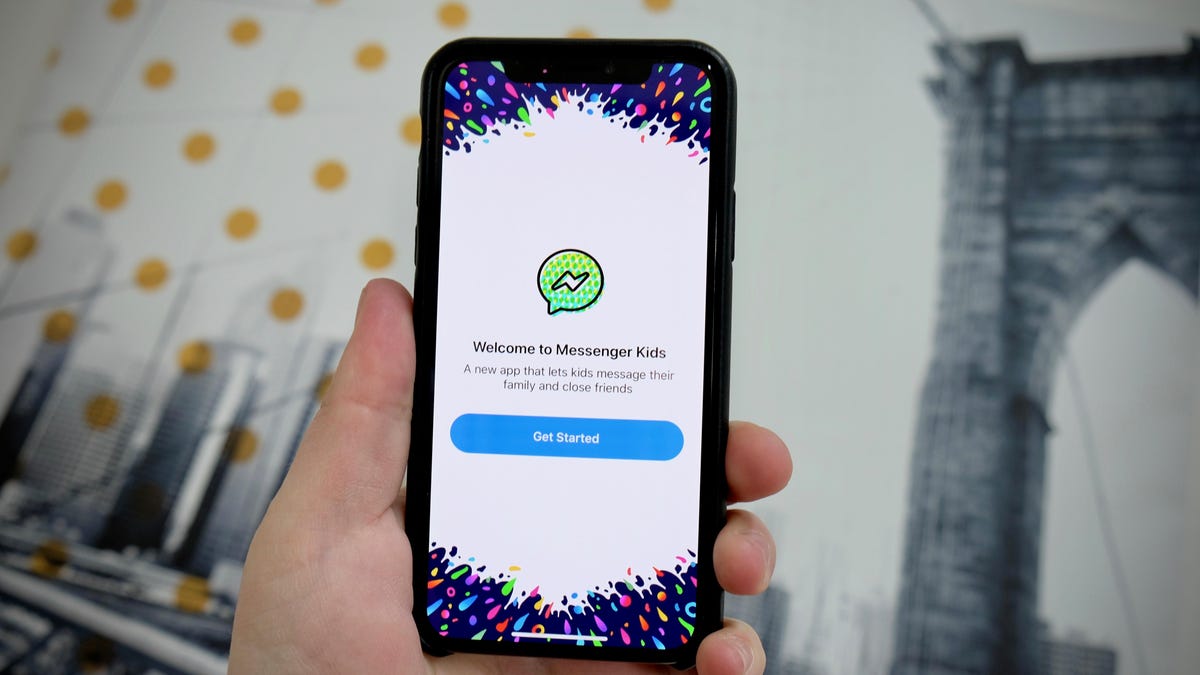What you need to know about Facebook's Messenger Kids
Facebook's latest app is designed specifically for your kids to message friends and family members.

Facebook on Monday announced Messenger Kids, a somewhat closed-down messaging app for children ages 6-12. The app doesn't require the child to sign up for a Facebook account, relies on the parent(s) to add any contacts and hides the child from any sort of public searches on the social network.
Skepticism is OK
Facebook knows a lot about each and every one of us. From crazy algorithms to identify people you may know, to precisely targeting users with ads — it's easy to be skeptical of Facebook's intentions with Messenger Kids.
Facebook has posted the Messenger Kids Privacy Policy on its site.
Before signing up your child, be sure to read through the policy and make sure there's nothing you object to. The gist of the policy is this: Facebook will collect data about your child and how he or she uses the app, contacts and device(s) used to access Messenger Kids. That data "may" be shared with third-parties to help improve Messenger Kids. A parent can delete a child's Messenger Kids account, which will include all information stored about the child.
Facebook is clear in its announcement that no ads are in Messenger Kids, and the information collected during use will not be used for ads.
Initial setup
To get started, you'll need to download Messenger Kids on your child's iOS device. The Android version is still a couple months out.
Open the app and then follow the prompts, which include logging in to your personal Facebook account and creating your child's Messenger Kids account.
After you've created your child's account, Messenger Kids will instruct you to hand the device to your child so he or she can complete setup. Your child will be asked to select an app color and take a profile picture.
Adding contacts
By default, you are immediately added as a contact for your child to message with. To add more contacts, open Facebook on your iOS or Android device, tap on the three-line button, then find Messenger Kids in the list (I found it under the Explore section after selecting "See More").
Each account you manage will show up in this section. Select an account to view current contacts and to approve or deny contact requests. A list of family members will also show up as contact options, followed by fellow Messenger Kids' accounts that belong to your Facebook contacts. Add or send requests by tapping on the appropriate button next to each contact name.
When sending a request, an alert will not go to the child's device. Instead, the parent will receive a request with details about who manages the child's account and if there are any mutual contacts.
Keep in mind that you will need to be Facebook friends with the parent of any child your child wants to add.
At any time, you can revisit the Messenger Kids section of your Facebook app to view your child's contact list, and if necessary, delete any contacts.
After that, it's still Messenger
Beyond a rather strict approach to adding contacts (and rightfully so), Messenger Kids acts a lot like Facebook Messenger does for adults. Your child can send and receive messages with a lone contact or in groups, and video chat works in the same way.
Stickers, GIFs and animated messages are also available, however, the long list of Messenger apps adults have access to are unavailable.

